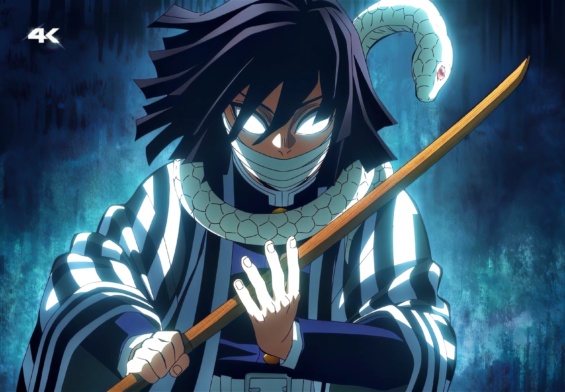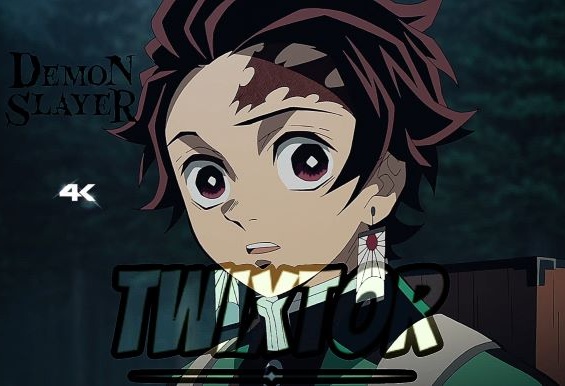♦ANIME TWIXTOR CLIPS♦
Download Anime Twixtor With No Subtitle for Edits : https://www.animeworldtwixtor.com/popular-anime-twixtor/
Text Me on Instagram For Queries & Promtion : https://www.instagram.com/rdj.edits1?igsh=cHkwNzV5YnFvdjZx
Download Anime Clips With No Subtitle For Edits : https://www.animeworldtwixtor.com/anime-clips-raw/
Subscribe my Youtube Channel For Extra Anime Twixtor : https://www.youtube.com/@Animeworld_ss
Tanjiro vs Upper 4 Twixtor
In the “Demon Slayer” anime, Tanjiro Kamado’s battle against Upper Rank 4 of the Twelve Kizuki, Hantengu, is one of the most intense and emotionally charged moments in the series. Tanjiro, a protagonist defined by his resilience and compassion, faces off against a demon who embodies fear and division, making this battle not only physically demanding but also psychologically significant.
Setting the Stage
This battle takes place during the “Swordsmith Village” arc, a pivotal point in Tanjiro’s journey. Hantengu is unique among the Upper Moons in that he can split into different emotional forms, each representing a particular aspect of his personality, like anger, joy, and sorrow. This ability complicates the fight, as Tanjiro and his allies must face multiple strong and skilled opponents at once, each form possessing different abilities and fighting styles.
The stakes are incredibly high. Not only is Tanjiro fighting to protect the village, but he’s also seeking vengeance for all the lives lost to the demons. His sister, Nezuko, and fellow Demon Slayer Corps members like Genya and Mitsuri Kanroji are also involved in this fight, and their fates depend on Tanjiro’s success.
Hantengu’s Forms
Hantengu’s ability to divide himself into multiple clones, each representing a powerful emotion, makes him one of the most challenging foes Tanjiro has ever faced. His four primary forms include Sekido (anger), Karaku (pleasure), Aizetsu (sorrow), and Urogi (joy). Each clone has unique abilities that complement their emotional representation:
- Sekido: Wields a staff with lightning abilities, symbolizing wrath.
- Karaku: Uses wind-based attacks, representing indulgence.
- Aizetsu: Employs a spear and has long-range, piercing attacks, reflecting deep sorrow.
- Urogi: Has bird-like features, using aerial assaults, symbolizing an uncontrolled sense of joy and freedom.
This division puts Tanjiro at a serious disadvantage because it’s like fighting four demons at once, each of them nearly as powerful as a regular Upper Moon demon.
Tanjiro’s Strategy
Despite being outnumbered, Tanjiro showcases his tactical brilliance and tenacity. He quickly realizes that the key to defeating Hantengu lies in understanding the true source of his power. Instead of just blindly attacking the four clones, Tanjiro works to locate and target Hantengu’s main body, which is smaller and more vulnerable. However, this proves challenging as Hantengu is adept at hiding and blending into his surroundings.
Tanjiro’s heightened sense of smell, a skill that has often helped him track demons, becomes a key factor here. He can smell the fear and malice emanating from Hantengu’s true form, giving him the edge he needs to pinpoint the demon’s location.
Twixtor-Enhanced Action
Tanjiro vs Upper 4 Twixtor Tanjiro vs Upper 4 Twixtor Tanjiro vs Upper 4 Twixtor Tanjiro vs Upper 4 Twixtor Tanjiro vs Upper 4 Twixtor Tanjiro vs Upper 4 Twixtor Tanjiro vs Upper 4 Twixtor Tanjiro vs Upper 4 Twixtor Tanjiro vs Upper 4 Twixtor V In the context of a “Twixtor” edit, which uses advanced motion interpolation to create slow-motion sequences, the visual intensity of the Tanjiro vs. Hantengu fight is amplified. Every strike, dodge, and counterattack in this fast-paced battle can be slowed down to show intricate details—like Tanjiro’s precise sword movements, Hantengu’s clones unleashing their powerful attacks, or the flickering flames of Tanjiro’s Sun Breathing technique.
For example, in a Twixtor-enhanced scene, the viewer can observe the sheer force of Sekido’s lightning strike as it arcs towards Tanjiro. Time slows down just enough to highlight the expression of determination on Tanjiro’s face as he narrowly evades the strike, the electricity crackling just inches from his skin. Twixtor’s slow-motion effect enhances the fluidity of Tanjiro’s sword techniques, making every movement look deliberate and highly refined.
Similarly, a Twixtor edit might emphasize the aerial combat between Urogi and Tanjiro. The slowed-down footage allows viewers to appreciate the choreography, like when Urogi swoops down from the sky and Tanjiro jumps up to meet him mid-air. The animation style and sound design—like the rush of wind or the clang of swords—become more pronounced in these moments, giving the fight a sense of weight and urgency.
Tanjiro’s Resolve
Throughout the battle, Tanjiro’s resolve to protect those he loves shines through. His mastery of Sun Breathing, a technique passed down from his ancestors, proves to be a critical factor in this fight. Each form of Hantengu represents a different emotional struggle, and Tanjiro must confront not just physical attacks but also the emotional weight of the fight. As the battle wears on, Tanjiro’s unwavering determination pushes him past his physical limits.
This fight is a testament to Tanjiro’s growth as a swordsman and as a person. By the end, he is able to deliver a decisive blow, cutting through the fear and confusion that Hantengu represents. The Twixtor-enhanced scenes highlight this final moment, slowing down time to showcase the sheer force of his final attack and the relief on his face as he achieves victory.
Conclusion
The battle between Tanjiro and Upper Rank 4 Hantengu is a masterclass in both animation and storytelling. With the use of Twixtor editing, the fight’s most crucial moments are given even greater visual clarity, allowing the audience to fully immerse themselves in the intensity of the action. This fight solidifies Tanjiro’s place as one of the strongest and most determined members of the Demon Slayer Corps, while also setting the stage for even greater challenges to come.





